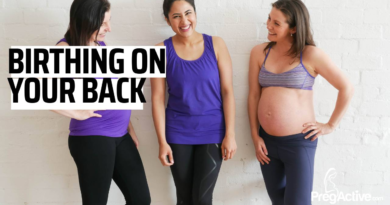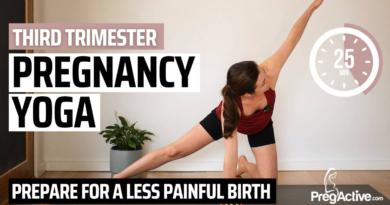Why we chose IVF for our second pregnancy
When our daughter was 11 days old, we received a call from the pediatrician. Her newborn screening results were in, and they indicated she had cystic fibrosis (CF). We knew nothing about the disease but were devastated as soon as we heard the words. A quick internet search told us that life expectancy for those with the condition was in the 30s or 40s. She’d start medications and airway clearance exercises within days to begin fighting the disease.
Despite the fact that CF was a genetic condition, one that we now knew we had a 25% chance of passing on to any of our children, we vowed almost immediately after the diagnosis that we’d still find a way to give our daughter a sibling. We’d always planned on having multiple children and now we felt strongly that our daughter would need someone on her team.
Our research revealed that we could choose IVF with genetic testing of the embryos to screen for cystic fibrosis. It seemed an easy choice at the time, a given that we’d take that path. But it would get harder.
There were several factors that made the choice to pursue IVF more complex. The first was a positive one. As we learned more about CF, we were overwhelmingly grateful to find that, in recent years, genetic modulators had been developed. It was predicted that the best in class of these modulators would drastically change the outlook of this disease for our daughter and so many living with CF.
We had a cautiously optimistic, but realistic, hope that our daughter would live a full life. But we still watched her spend hours of her life each week on treatments designed to keep her lungs as clear as possible and dispensed fistfuls of medication for her to take each day.
We still winced at her coughing fits throughout the night, knowing that something lurked in her body that would like to destroy her from the inside out if we weren’t fighting it back.
While we could see how other CF carriers would chance passing along the disease given the promising medical advancements, ultimately, we decided that we didn’t want to put another child through this if we had another option.
And we did have a promising option, but what would be the cost—financial and otherwise? We were among the lucky ones from a financial standpoint—my husband’s insurance provided some coverage for fertility treatment. But we’d find that the maximum lifetime contribution would disappear quickly with frequent appointments, multiple medications, genetic testing and numerous procedures.
As I sat in the waiting room of the fertility clinic, I’d hear other women talk of the second mortgages they’d took out to have a baby. I watched our savings dwindle and began to wonder how far we’d go.
There was also the physical and emotional investment. I’d seen the social media photos of babies surrounded by used hormone injection needles in the shape of a heart and thought they must have attempted IVF for years to collect that many. Then my red sharps containers started to fill up. There is a pain unique to slowly injecting a 1.5-inch needle full of thick progesterone in the buttocks nightly for months.
But I think that many women who have gone through the process may agree that the physical pain is easier than the emotional toll. While I always felt that I didn’t have the same right to be emotional about the IVF process—we had one amazing child already, and I could, as far as I knew, have another child without fertility treatments—the emotional investment of putting so much into something only to receive a call saying that your blood work indicates it was all for nothing cannot be measured on a pain assessment chart.
And, of course, the financial, physical and emotional tolls all increased exponentially with the investment of time. While we had no idea if we’d conceive without fertility treatments in a short timeframe—it hadn’t been immediate with our daughter—it seemed like every stage of the IVF process added months, and I felt the gap between our daughter and her potential sibling continuing to grow.
Partially because my husband is an identical twin, we’d hoped for our kids to be close in age. When we began the process, we learned that with insurance approval, the retrieval process, genetic testing of the embryos, and the transfer process, a six-month timeline would be the best case scenario. And that’s if all those steps went perfectly (they wouldn’t) and if the first transfer was successful (it wasn’t).
Naively, I had thought it would be successful the first time—we were just doing this for genetic reasons and our “fertility” was fine, right?
As we went through two failed transfers, the timeline continued to creep. I hadn’t imagined that we’d have to do a second retrieval, so after exhausting all viable embryos with the first two transfers, it felt like we were back to square one.
As the process wore on us, there were several times that I thought and suggested to my husband that “we should just roll the dice,” try without IVF and hope the next doesn’t have CF. But we’d invested so much in this process already and were still unwilling to knowingly pass the disease along. Ultimately, we knew that if one of the embryos from the second retrieval wasn’t successful, we would begin to mourn the type of family we had envisioned. In my darkest days, I already had.
And then, we received a call from the doctor, the voice a very different tone from the call with our daughter’s diagnosis and the calls after our last two transfers.
The bloodwork was in, and it was positive. There was joy, of course. But also an overwhelming sense of relief that the process was over (hopefully). We knew there were many people who invested just as much, and much more, and walked away with nothing. And we’d soon learn that our rate of return had doubled: Shockingly, our embryo had split and we were expecting twin boys.
We don’t know what we would have gotten without this process, if we had decided to try without reproductive assistance. Would we have gotten pregnant at all? Would they have CF? Would our daughter have a little brother or a little sister? Were we destined to have these twins or had IVF contributed to the embryo splitting?
For me, though, there is no alternate reality. This was the only path we were willing to take. We’d had our reasons for making this choice, and though we couldn’t have imagined it before, I now hold two more reasons in my arms.




